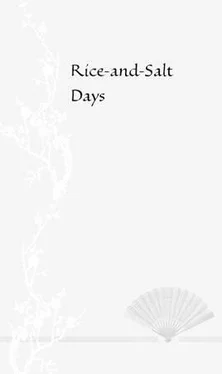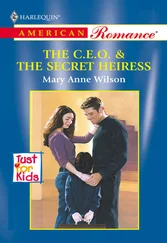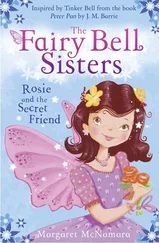Lisa See - Snow Flower And The Secret Fan
Здесь есть возможность читать онлайн «Lisa See - Snow Flower And The Secret Fan» весь текст электронной книги совершенно бесплатно (целиком полную версию без сокращений). В некоторых случаях можно слушать аудио, скачать через торрент в формате fb2 и присутствует краткое содержание. Жанр: Старинная литература, на английском языке. Описание произведения, (предисловие) а так же отзывы посетителей доступны на портале библиотеки ЛибКат.
- Название:Snow Flower And The Secret Fan
- Автор:
- Жанр:
- Год:неизвестен
- ISBN:нет данных
- Рейтинг книги:3 / 5. Голосов: 1
-
Избранное:Добавить в избранное
- Отзывы:
-
Ваша оценка:
- 60
- 1
- 2
- 3
- 4
- 5
Snow Flower And The Secret Fan: краткое содержание, описание и аннотация
Предлагаем к чтению аннотацию, описание, краткое содержание или предисловие (зависит от того, что написал сам автор книги «Snow Flower And The Secret Fan»). Если вы не нашли необходимую информацию о книге — напишите в комментариях, мы постараемся отыскать её.
Snow Flower And The Secret Fan — читать онлайн бесплатно полную книгу (весь текст) целиком
Ниже представлен текст книги, разбитый по страницам. Система сохранения места последней прочитанной страницы, позволяет с удобством читать онлайн бесплатно книгу «Snow Flower And The Secret Fan», без необходимости каждый раз заново искать на чём Вы остановились. Поставьте закладку, и сможете в любой момент перейти на страницу, на которой закончили чтение.
Интервал:
Закладка:
Having heard so many stories, I thought of my own. For forty years, the past only aroused regret in me. Only one person ever truly mattered to me, but I was worse to her than the worst husband. After Snow Flower asked me to be an aunt to her children, she said—and these were the last words she ever spoke to me—”Though I was not as good as you, I believe that heavenly spirits joined us. We will be together forever.” So many times I’ve thought back on that. Was she speaking the truth? What if the afterworld has no sympathy? But if the dead continue to have the needs and desires of the living, then I’m reaching out to Snow Flower and the others who witnessed it all. Please hear my words. Please forgive me.
Author’s Note and Acknowledgments
ONE DAY IN THE 1960S, AN OLD WOMAN FAINTED IN A RURAL Chinese train station. When the police searched her belongings in an effort to identify her, they came across papers with what looked to be a secret code written on them. This being the height of the Cultural Revolution, the woman was arrested and detained on suspicion of being a spy. The scholars who came to decipher the code realized almost at once that this was not something related to international intrigue. Rather, it was a written language used solely by women and it had been kept a “secret” from men for a thousand years. Those scholars were promptly sent to labor camp.
I first came across a brief mention of nu shu when I wrote a review of Wang Ping’s Aching for Beauty for the Los Angeles Times. I became intrigued and then obsessed with nu shu and the culture that rose up around it. I discovered that few nu shu documents—whether letters, stories, weavings, or embroideries—have survived, since most were burned at grave sites for metaphysical and practical reasons. In the 1930s, Japanese soldiers destroyed many pieces that had been kept as family heirlooms. During the Cultural Revolution, the zealous Red Guard burned even more texts, then banned the local women from attending religious festivals or making the annual pilgrimage to the Temple of Gupo. In the following years, the Public Security Bureau’s scrutiny further diminished interest in learning or preserving the language. During the last half of the twentieth century, nu shu nearly became extinct, as the primary reasons that women used it disappeared.
After I chatted about nu shu in an e-mail with Michelle Yang, a fan of my work, she very sweetly took it upon herself to look up and then forward to me what she found on the Internet about the subject. That was enough for me to begin to plan a trip to Jiangyong (previously called Yongming) County, where I went in the fall of 2002, with the help of the brilliant and prudent planning of Paul Moore of Crown Travel. When I arrived, I was told I was only the second foreigner to go there, although I knew of a couple of others who had apparently flown under the radar. I can honestly say that this area is still as remote as ever. For this reason, I must thank Mr. Li, who not only was a great driver (which is hard to find in China) but who also proved to be very patient when his car got stuck in one muddy track after another as we traveled from village to village. I was extremely lucky to have Chen Yi Zhong as my interpreter. His friendly manner, eagerness to walk unannounced into houses, subtlety with the local dialect, familiarity with classical Chinese and history, and enthusiastic interest in nu shu— something that he had not known existed—helped make my journey especially fruitful. He translated conversations in alleys and kitchens, as well as nu shu stories that had been collected by the nu shu museum. (Let me now offer my appreciation to the director of that museum, who most generously opened display cases and let me peruse the collection.) I have relied on Chen’s colloquial translation of many things, including the Tang dynasty poem that Lily and Snow Flower wrote on each other’s bodies. Since this region is still closed to foreigners, it was necessary to travel in the company of a county official, also named Chen. He opened many doors, and his relationship with his bright, beautiful, and cherished daughter showed me more than any article or speech how the status of little girls has changed in China.
Together, Messieurs Li, Chen, and Chen took me by car, pony-pulled cart, sampan, and foot to see and do everything I wanted. We went to Tong Shan Li Village to meet Yang Huanyi, who was then age ninety-six and the oldest living nu shu writer. Her feet had been bound when she was a girl and she told me about that experience, as well as her wedding ceremonies and festivities. (Although anti-footbinding activities began in the late nineteenth century, the practice lingered in rural areas well into the twentieth. Only in 1951, when Mao Zedong’s armies finally liberated Jiangyong County, did the practice end in the nu shu region.)
Recently, the People’s Republic of China reversed its previous stance and now considers nu shu to be an important element of the Chinese people’s revolutionary struggle against oppression. To that end, the government is making an effort to keep the language alive by opening a nu shu school in Puwei. It was there that I met and interviewed Hu Mei Yue, the new teacher, and her family. She shared with me tales about her grandmothers and how they taught her nu shu.
Even today, the village of Tongkou is an extraordinary place. The architecture, paintings on the houses, and what remains of the ancestral temple all attest to the high quality of life that was once enjoyed by the people who lived there. Interestingly, although today the village is poor and remote by any measure, the temple lists four men from this area who became imperial scholars of the highest rank during the reign of Emperor Daoguang. Beyond what I learned in the public buildings, I would like to thank the many people of Tongkou who let me wander freely in their homes and answered endless questions. I’m also grateful to the people of Qianjiadong—believed to be the Thousand Family Village of Yao lore rediscovered by Chinese scholars in the 1980s—who also treated me as an honored guest.
On my first day back home, I sent an e-mail to Cathy Silber, a professor at Williams College, who in 1988 did field research on nu shu for her dissertation, to say how impressed I was that she had lived for six months in such an isolated and physically uncomfortable area. Since then, we have spoken by phone and through e-mail about nu shu, the lives of the women writers, and Tongkou. I was also helped tremendously by Hui Dawn Li, who answered countless questions about ceremonies, language, and domestic life. I am immensely grateful for their knowledge, openness, and enthusiasm.
I am deeply indebted to the works of several other scholars and journalists who have written about nu shu: William Chiang, Henry Chu, Hu Xiaoshen, Lin-lee Lee, Fei-wen Liu, Liu Shouhua, Anne McLaren, Orie Endo, Norman Smith, Wei Liming, and Liming Zhao. Nu shu relies heavily on standard phrases and images—such as “the phoenix squawks,” “a pair of mandarin ducks,” or “the heavenly spirits matched the two of us”—and I, in turn, have relied on the translations of those listed above. However, since this is a novel, I did not use the customary pentasyllabic and heptasyllabic rhyming scheme used in nu shu letters, songs, and stories.
For information on China, the Yao people, Chinese women, and footbinding, I would like to acknowledge the work of Patricia Buckley Ebrey, Benjamin A. Elman, Susan Greenhalgh, Beverley Jackson, Dorothy Ko, Ralph A. Litzinger, and Susan Mann. Finally, Yue-qing Yang’s evocative documentary, Nu-shu: A Hidden Language of Women in China, helped me to understand that many women in Jiangyong County are still living with the fallout of arranged, loveless marriages. All these people have their own well-established opinions and conclusions, but please remember Snow Flower and the Secret Fan is a work of fiction. It doesn’t purport to tell everything about nu shu or explain all its nuances. Rather, it is a story that has been filtered through my heart, my experience, and my research. Put another way, all mistakes are my own.
Читать дальшеИнтервал:
Закладка:
Похожие книги на «Snow Flower And The Secret Fan»
Представляем Вашему вниманию похожие книги на «Snow Flower And The Secret Fan» списком для выбора. Мы отобрали схожую по названию и смыслу литературу в надежде предоставить читателям больше вариантов отыскать новые, интересные, ещё непрочитанные произведения.
Обсуждение, отзывы о книге «Snow Flower And The Secret Fan» и просто собственные мнения читателей. Оставьте ваши комментарии, напишите, что Вы думаете о произведении, его смысле или главных героях. Укажите что конкретно понравилось, а что нет, и почему Вы так считаете.












